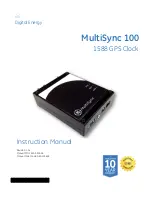
UBX-G7020 - Hardware Integration Manual
Design-in
GPS.G7-HW-10003
Objective Specification
Page 36 of 74
Figure 18: RF path for best GPS/GNSS performance
The LNA (U1) can be selected to deliver the performance needed by the application in terms of:
Noise figure (sensitivity)
Selectivity and linearity (Robustness against jamming)
Robustness against RF power and ESD
The external LNA (U1) must be placed close to the antenna to get best performance.
The PIO16 (ANT_OFF_N) signal can be used to enable and disable the external LNA to lower power consumption,
e.g. in Power Save Mode. To enable this, PIO16 must be configured via the Low Level Configuration to provide
the ANT_OFF function with the correct polarity - ANT_OFF_N signal. This configuration is part of the antenna
supervisor section within the Low Level Configuration, see section 2.10.2.
A pull-down resistor (R7) is required to ensure correct operation of the ANT_OFF_N signal at PIO16.
2.6.2.3
Improved jamming immunity
If the UBX-G7020 is exposed to an interference environment it is recommended to use additional filtering.
Improved interference immunity with good GPS/GNSS performance is achieved when using a SAW/LNA/SAW
configuration between the antenna and the UBX-G7020 matching network. The single-ended SAW Filter F2 (see
section 3.6) can be placed in front of the LNA matching network to prevent saturation caused by very strong
interferers.
Components L1 and C2 serve as input matching for the LNA input. Depending on the board layout the values
need to be tuned until a 50 Ohm input impedance is achieved. Starting values are provided in Sections 3.14 and
3.16, C1 is a DC block.
It should be noted that the insertion loss of filter F2 directly affects the system noise figure and hence the system
performance. Choice of a component with low insertion loss is mandatory when a passive antenna is used with
this set-up.
Figure 19: Jamming Immune RF input with good GPS/GNSS performance
Confidential
















































